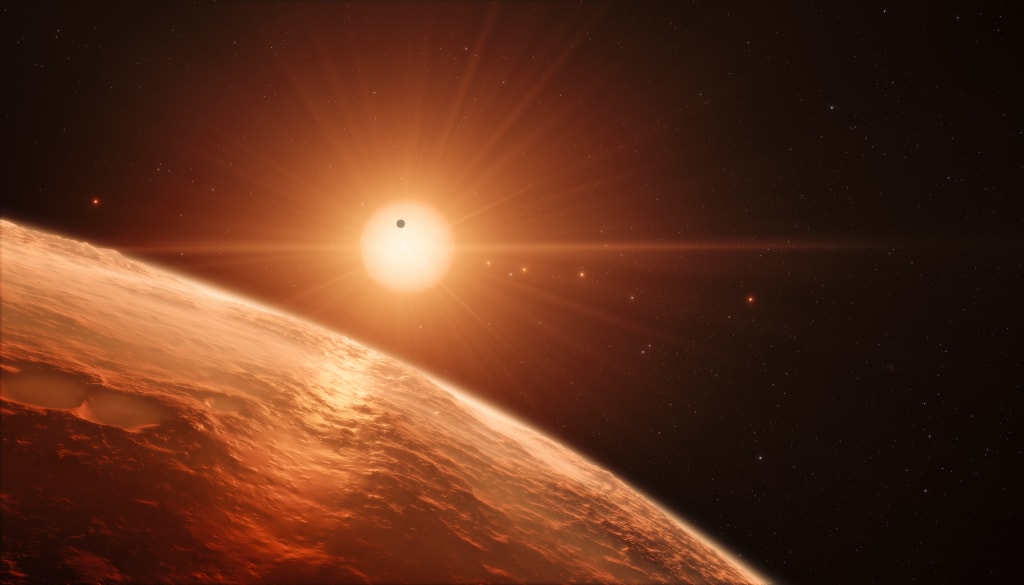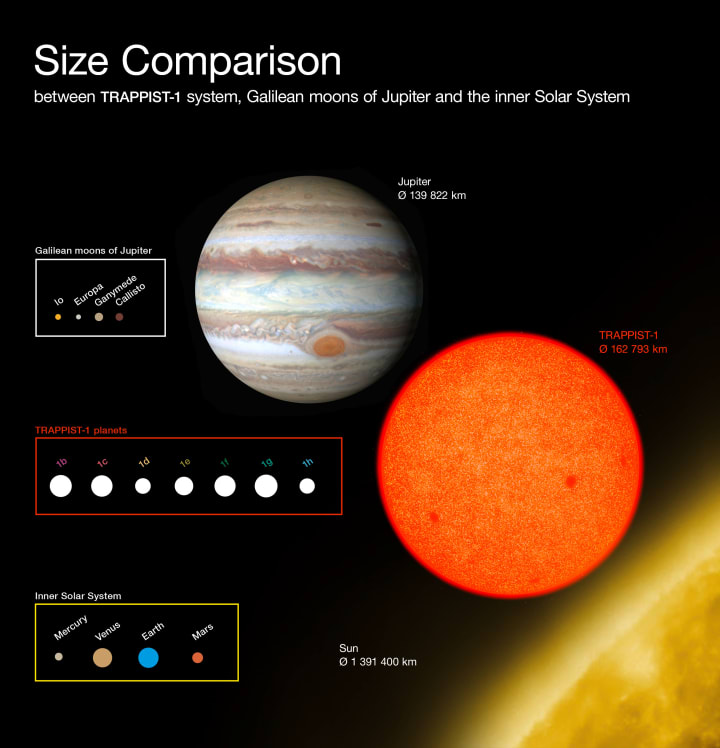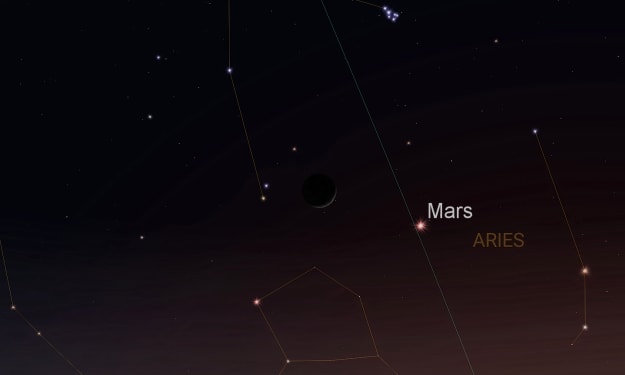Three Potential New Earths Found in a Planetary System of Seven
“Looking for life elsewhere, this system is probably our best bet as of today"

Astronomers have discovered what is undoubtedly one of the most exciting exoplanet systems of recent years; seven Earth-sized worlds orbiting a red dwarf star only 40 light years away. What makes this find extraordinary is that all seven may have oceans of liquid water and three may even harbor life itself.
The star, known as TRAPPIST-1, was studied for over a year by an international team of astronomers from Chile, Morocco, Hawaii, La Palma and South Africa. In September 2016, NASA's Spitzer Telescope turned its attention to the star and contributed to the study. The results are published today in the journal Nature .
Lead author Michaël Gillon of the STAR Institute at the University of Liège in Belgium is especially enthralled with the discovery. “This is an amazing planetary system — not only because we have found so many planets, but because they are all surprisingly similar in size to the Earth!”
The planets were discovered as they each passed in front of the star and dimmed its distant light. The resulting data allowed the astronomers to estimate their orbits, the mass of the planets and to deduce their corresponding rocky composition.
In astronomical terms, they hit the jackpot. All seven worlds were found to be roughly the size of the Earth (or slightly smaller) and all but the outermost have temperatures similar to our own homeworld. This gives the system the largest number of Earth-sized planets and also the largest number of worlds with potentially liquid water on their surfaces.
To put the discovery into perspective, the parent star is a red dwarf with only about 8% the mass and 15% the diameter of the Sun - which makes it slightly larger than Jupiter. It can be found in the autumnal constellation of Aquarius, the Water Bearer, but is far too faint to be seen with the naked eye.
Size comparison of the TRAPPIST-1 system, the Jovian system and our own inner solar system.

This diagram compares the sizes of the newly-discovered planets around the faint red star TRAPPIST-1 with the Galilean moons of Jupiter and the inner Solar System. All the planets found around TRAPPIST-1 are of similar size to the Earth.
Credit: ESO/O. Furtak
A Solar System in Miniature

This diagram compares the orbits of the newly-discovered planets around the faint red star TRAPPIST-1 with the Galilean moons of Jupiter and the inner Solar System. All the planets found around TRAPPIST-1 orbit much closer to their star than Mercury is to the Sun, but as their star is far fainter, they are exposed to similar levels of irradiation as Venus, Earth and Mars in the Solar System.
Credit:ESO/O. Furtak
Co-author Amaury Triaud: “The energy output from dwarf stars like TRAPPIST-1 is much weaker than that of our Sun. Planets would need to be in far closer orbits than we see in the Solar System if there is to be surface water. Fortunately, it seems that this kind of compact configuration is just what we see around TRAPPIST-1!”
Following standard convention, the seven planets are known as TRAPPIST-1b, c, d, e, f, g and h. The planetary system is not much larger than Jupiter and its four largest moons, the Galilean satellites, and as such the energy required to warm these worlds is significantly less than would be the case for comparable planets orbiting our own sun. For example, TRAPPIST-1c, d and f receive similar amounts of energy as Venus, Earth and Mars, respectively.
All seven worlds may have liquid water but the three innermost planets - b, c and d - may be too hot. The distance of the outermost planet, h, is still unconfirmed but it's thought to be too cold. Of the rest, e, f and g all orbit within the star's "habitable zone" and may harbor oceans. And where there's warmth and water, there could be life.
“Looking for life elsewhere, this system is probably our best bet as of today,” says co-author Brice-Olivier Demory, professor at the University of Bern’s Center for Space and Habitability.
TRAPPIST-1 may not be alone as there may be other nearby systems and civilizations.
“About 15 percent of the stars in our neighborhood are very cool stars like TRAPPIST-1," explains Demory. "We have a list of about 600 targets that we will observe in the future.”
With technology advancing at an impressive rate, it will soon be possible to study the atmospheres of these worlds.
“The James Webb Space Telescope, Hubble’s successor, will have the possibility to detect the signature of ozone if this molecule is present in the atmosphere of one of these planets,” explains Demory. “This could be an indicator for biological activity on the planet.”
With such a discovery potentially only years away. the confirmation of life elsewhere will have a significant impact upon life here on Earth.
About the Creator
Richard J. Bartlett
A former monthly columnist for Astronomy magazine, Richard J. Bartlett has had a passion for the stars since the age of six. Now living in the suburbs of Los Angeles, he still stops to stare at the stars through the city's light-pollution.






Comments
There are no comments for this story
Be the first to respond and start the conversation.